MUSICAL CULT CONTROL HOWTO and WHYTO Convert any song from 440 Hz to 432 Hz Using Adobe Audition or freeware AUDACITY – A440 to A432
AUDACITY — pitch shift by amount -1.776%
AUDITION — pitch shift by -0.31 semitones
MUSICAL CULT CONTROL
Dr Leonard Horowitz MUSICAL CULT CONTROL
See the paper MUSICAL CULT CONTROL by Dr Leonard Horowitz which details the weaponization of A440 tuning standard and its A432 alternative.
PDF — Musical_Cult_Control – A440 vs_A432 – Dr_Leonard_Horowitz
Dangers of Negativos – June 2024 Update
A significant number of websites that should intend better if not know better instead downplay or even deride and dismiss this concept, as if tuning and sound quality is irrelevant — and precisely Zero do so with any evidence beyond their own hapless yap. It’s like insisting that ingredients in food do not matter; however, every discerning palate instantly tastes truth.
Pay close attention to who attempts to mislead you versus who tells the awful truth: Allow the negativo downplayers and naysayers which spew doubt and derision to self-extinguish.
The 2017 paper linked below offer a stunning compilation and summary that connects-the-dots and presents the 12 primary “Electromagnetic Frequency Patterns that are Crucial for Health and Disease reveal a Generalized Biophysical Principle” — (note that 432 Hz is present and 440 Hz is not)
We hypothesize that living organisms make use of algorithmic frequencies that unite the first, second and third harmonics of waves, and has an analogy with the science of sound. Our analysis of 240 different frequencies of biological electromagnetic experiments published in more than 300 papers, ranging from less than one Hertz till Peta Hertz, has been recently finalized. Based on this analysis we propose that the same type of intervals as found by Pythagoras can be discovered for living systems, cells and biomolecules, at which the frequency intervals are positioned at 1:2 and closely approaching 2:3. The discovered frequencies are organized in patterns forming a closed system of fifth’s, in which the Pythagorean comma (being the intrinsic difference between twelve just perfect fifths and seven octaves in this classical music theory), has been evenly redistributed over two fifth’s and thereby is virtually removed (Loy, 2011)
The frequencies analyzed for living systems show 12 “fifths” with a mean value of 1.498307, of which 5 fifths are precisely 2:3. Under these conditions a reference scale of 12 typical coherent frequencies can be defined:
- 256.00 Hz
- 269.70 Hz
- 288.00 Hz
- 303.41 Hz
- 324.00 Hz
- 341.33 Hz
- 362.04 Hz
- 384.00 Hz
- 404.54 Hz
- 432.00 Hz
- 455.12 Hz
- 486.00 Hz
Probably a new bio-physical principle has been found, revealing how nature installs coherence in living organisms, cells, and biomolecules, by uniting the first, second and third harmonics of waves.
https://www.academia.edu/35199978/Electromagnetic_Frequency_Patterns_that_are_Crucial_for_Health_and_Disease_reveal_a_Generalized_Biophysical_Principle_the_GM_scale
According to this summary of 120 studies, the wrong tone or quality of sound sickens, cancerizes — Note 443.2 Hz is fourth from right.
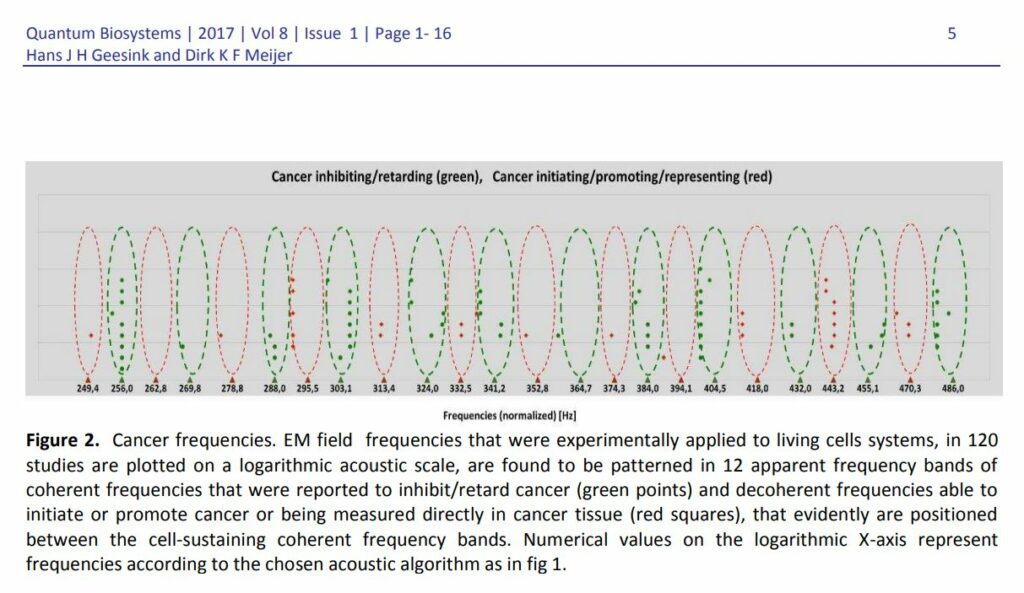
What intermodulations result in these ‘ill frequencies’? What is an adequate threshold of quality to repugnancy necessary to boost, vs maintain, vs degrade overall health? If “ill” frequencies exist, surely “ill” music does.
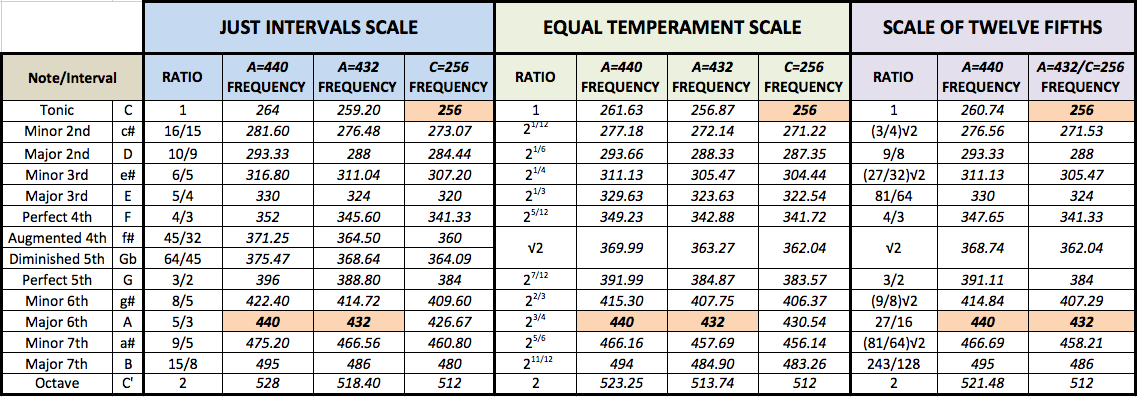
From https://crumplepop.com/a432-vs-a440-which-tuning-standard-is-better/
Before the standardization, each composer would tune their instruments and orchestras at different pitches. For instance, before becoming an advocate of 432 Hz, Italian composer Giuseppe Verdi would use A4 = 440 Hz, Mozart at 421.6 Hz, and Beethoven’s tuning fork resonated at 455.4 Hz.
In the 19th century, the world of Western music gradually started heading toward tuning standardization. Still, it wouldn’t be until the following century that the orchestra worldwide agreed on a unique reference pitch, thanks to the International Organization for Standardization.
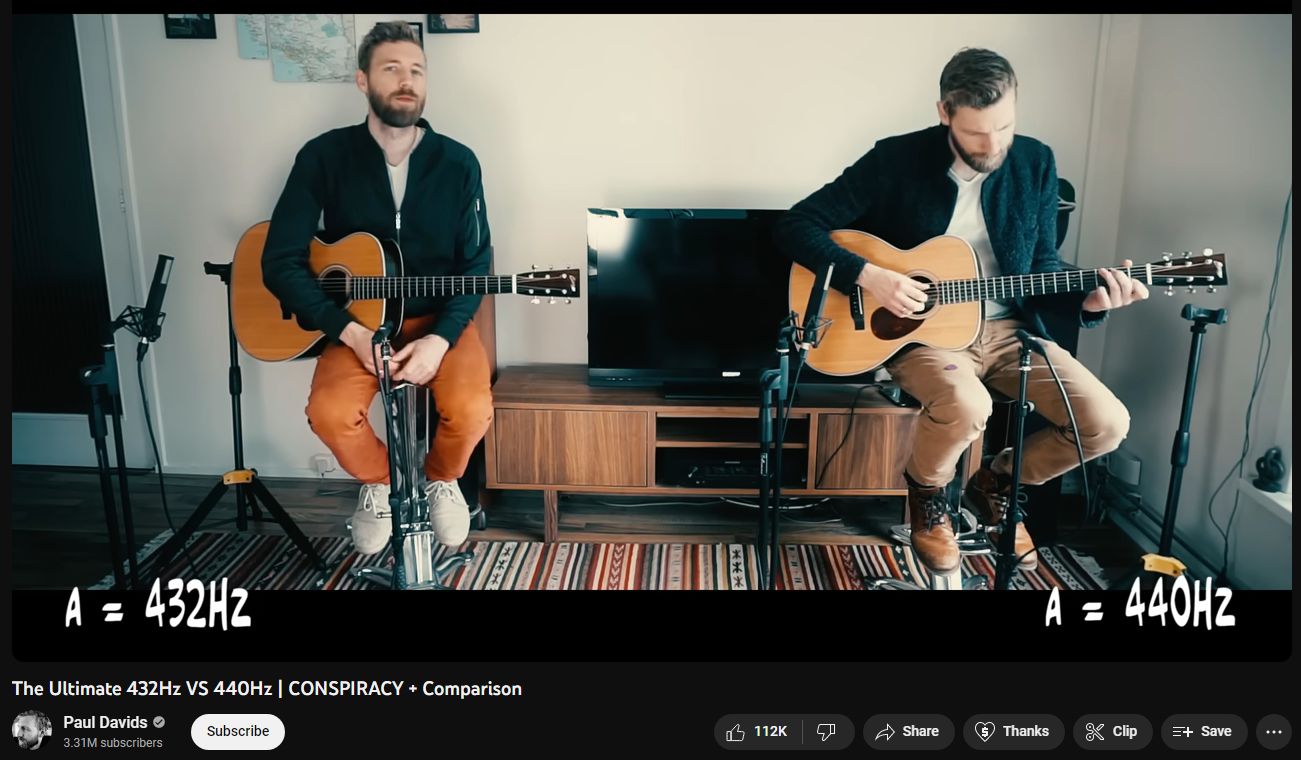
Why Did 440 Hz Become The Tuning Standard?
Decades before the universal standardization of the 20th century, the French standard of 435 Hz became the most commonly used frequency. In 1855, Italy opted for A4 = 440 Hz, and the United States followed suit by the beginning of the 20th century.
In 1939, the International Organization for Standardization recognized 440 Hz as the standard concert pitch. This is how A4 = 440 Hz became the tuning standard of all instruments we use today, both analog and digital.
Today, most of the music you hear broadcasted on the radio or live at a concert hall use 440 Hz as a reference pitch. However, there are many exceptions, like the Boston Symphony Orchestra, which uses 441 Hz, and orchestras in Berlin and Moscow, which go up to 443 Hz, and 444 Hz.
So, is this the end of the story? Not at all.
What Is 432 Hz?
432 Hz is an alternative tuning system first suggested by French philosopher Joseph Sauveur in 1713 (more about him later). The Italian composer Giuseppe Verdi recommended this reference pitch as the standard for orchestras in the 19th century.
Although the worldwide music community agreed to use A4 = 440 Hz as the primary tuning reference, many musicians and audiophiles claim that music at A4 = 432 Hz sounds better, richer, and more relaxing.
Others believe that 432 Hz is more in line with the frequency of the universe and the Earth’s natural frequency pulsation. As described by the Schumann resonance, the fundamental frequency of Earth’s electromagnetic waves resonates at 7.83 Hz, so very close to 8, a number that supporters of 432 Hz like very much for its symbolic meaning.
Although the 432 Hz movement has been going on for quite some time, the last couple of decades saw its supporters fighting with renewed energy because of the supposedly healing powers this frequency has and the benefits it can provide to listeners.
HOWTO – Steps to convert an audio file from A440 to A432 using Audacity:
1. Open Audacity: Launch the Audacity software on your computer.
2. Import Audio File: Import the audio file that you want to convert from A440 to A432. You can do this by going to `File` > `Import` > `Audio…` and selecting the file from your computer.
3. Select the Entire Audio: Click on the audio track to select it. You can do this by clicking on the area above the audio track, which will highlight the entire track.
4. Change Pitch: Once the audio track is selected, go to `Effect` > `Change Pitch…`. This will open a dialog box where you can adjust the pitch of the audio.
5. Adjust Pitch: In the Change Pitch dialog box, you can enter the desired semitones or frequency change. To convert from A440 to A432, you would typically need to decrease the pitch by approximately -32.6 cents or -0.32 semitones. You can enter this value in the “Percent Change” field or use the slider to adjust the pitch accordingly.
6. Preview and Apply: You can preview the changes by clicking on the “Preview” button. Once you are satisfied with the pitch adjustment, click on the “OK” button to apply the changes.
7. Export Audio: After applying the pitch adjustment, you can export the modified audio file by going to `File` > `Export` > `Export Audio…`. Choose the desired file format and save location, then click on the “Save” button to export the converted audio file.
By following these steps, you can convert an audio file from A440 to A432 using Audacity. Keep in mind that altering the pitch of an audio file may affect its sound quality, so it’s recommended to listen to the preview before exporting the modified file.
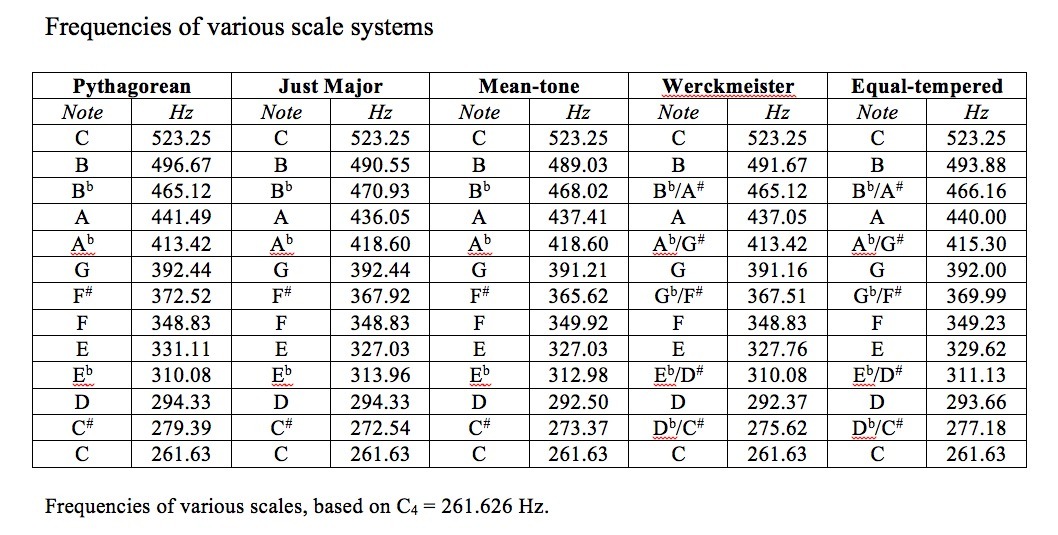
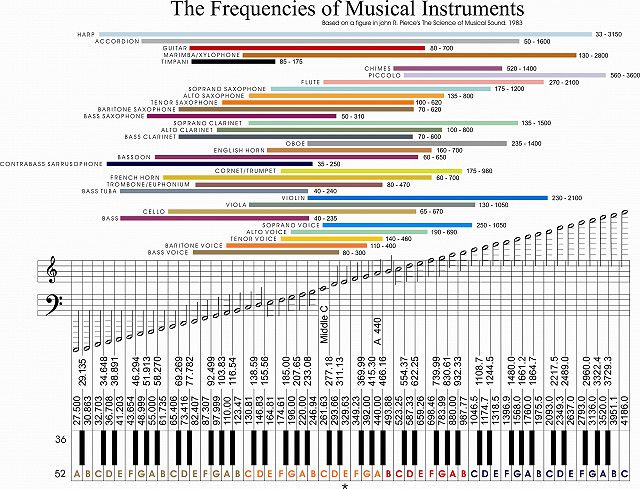

From a comment online: “What amazes me is the fullness of the sound at 432. …You [feel] the music in your chest- – you don’t just hear it with your head – and it’s got nothing to do with volume.”